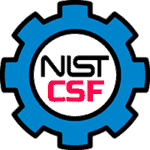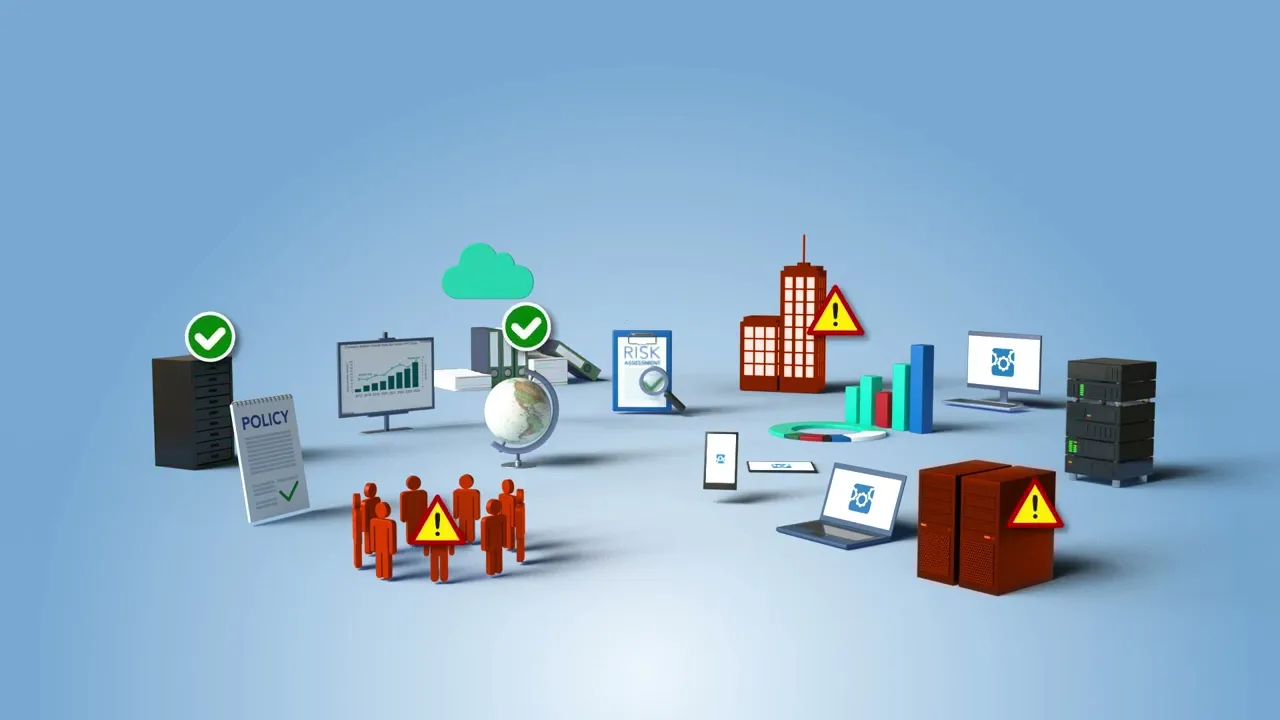Your Roadmap to Risk Reduction!
Table of Contents
ToggleThe Continuum GRC ITAM SaaS platform has hundreds of plugin modules available, such as:

NIST Cyber Security Framework (CSF)
All businesses within the public-private sectors concerned about security will find the NIST CSF indispensable for both national and economic security. Even if you are not seeking FISMA attestation or certifications, the NIST CSF is the best place to start securing your organization.
Modules include:
- NIST CSF System Security Plan (SSP)
- NIST CSF Security Assessment Report (SAR)
- Federal Information Processing Standard (FIPS) 199 Categorization
- Plan of Action and Milestones (POA&M)
NIST Compliance and Risk Assessments Services
The National Institute of Standards and Technology (NIST) has established specific guidelines around cybersecurity for contractors, organizations, and federal agencies that want to strengthen their security profile. The cybersecurity framework revolves around five core functions that will better protect sensitive systems and information, and reduce the incidence or impact of cyber threats. These functions are: identify, protect, detect, respond, and recover.
The NIST compliance services from Continuum GRC will assess how much of a cybersecurity risk your organization is currently facing and introduce ways to reduce it. Having your data security meet NIST compliance standards demonstrates a commitment to data security against potential legal issues or reputational damage.
How A Business Becomes NIST Compliant
To achieve NIST compliance, a business must use the specific security controls outlined in NIST guidelines for IT infrastructure, systems, and personnel. The use of these controls must be regularly documented to demonstrate their effectiveness and show that they’re being adhered to, including any training.
This multi-step process begins with identifying gaps or potential threats in the internet infrastructure, then applying proper security controls. Policies and procedures must be created to manage Controlled Unclassified Information (CUI), including data encryption and cybersecurity controls.
Showing compliance comes from internal self-assessments or through a third-party audit, such as Continuum GRC.
Industries We Serve
NIST compliance is required for federal agencies and their contractors. It’s also needed in certain regulated industries that handle sensitive data, like finance or healthcare. Other industries can benefit from following NIST security protocols; their cybersecurity is greatly strengthened, which also has the benefit of boosting confidence among clients and vendors. E-commerce, banking, energy, transportation, and even defense are industries that will benefit from applying NIST requirements to the ways that they handle their Controlled Unclassified Information (CUI).
A NIST cybersecurity audit is a smart element in risk management. Continuum GRC can walk you through this assessment in a streamlined, efficient way.
Our approach to the NIST CSF Assessment
We begin by having a look at your existing IT infrastructure and systems to assess security gaps and potential threats against the NIST standards. We’ll help implement corrective measures. Once you achieve NIST status, documentation and regular testing is critical to maintain compliance. We walk you through the kinds of security measures that need to be implemented and maintained, and the testing, training, and ongoing documentation needed to satisfy NIST standards.
Navigating this checklist on your own can be daunting and time-consuming. As experienced third-party assessors, we have the services and insight to guide you through it efficiently.
What are you waiting for?
FAQ
What is the NIST Cybersecurity Framework (CSF)?
The framework is a set of guidelines (rather than rules) that help organizations better understand and assess their cybersecurity. It’s built around five core functions: Identify, Protect, Detect, Respond, and Recover. Tiers of implementation are also used to help measure their system and identify areas for improvement in an organized way.
Who should use NIST CSF compliance audit services?
Any organization working with federal agencies must be NIST-compliant. Groups handling sensitive (yet unclassified) data – like banks, healthcare, transportation, and the like – can also benefit from a NIST cybersecurity audit. Knowing where you are in these carefully-crafted standards is helpful in strengthening your security posture and showing a commitment to data protection.
What are the five core functions of the NIST CSF?
NIST is structured around five core functions, allowing a clear way to organize best practices around cybersecurity.
- Identify (potential riskss and vulnerabilities)
- Protect (implement security measures)
- Detect (establish security controls to monitor threats and vulnerabilities)
- Respond (have a plan to respond to/mitigate security incidents)
- Recover (plans and backups to restore systems)
Is NIST CSF compliance mandatory?
NIST compliance is only mandatory for federal agencies and their contractors. While it’s not legally required, many organizations handling sensitive information and date opt to maintain compliance with NIST standards as a way to demonstrate their commitment to security and prevent reputational damage or legal issues.
How do NIST CSF audits help improve cybersecurity?
A NIST CSF audit uncovers the security gaps in your organization’s systems and processes. Then it helps fix them, and establish readiness in case a cyberthreat comes around. You’ll understand the most effective ways to train staff, protect, document, and handle your cybersecurity in a more efficient and streamlined way.
What deliverables are typically provided in a NIST CSF audit?
The audit report will include an assessment of the organization’s risk management practices, vulnerabilities and recommendations, and review of all documentation (like access logs) to ensure that its up to date. Supporting documentation, an action plan, and suggested milestones for implementation are also among the deliverables.
You are just a conversation away from putting the power of Continuum GRC to work for you.
Contact us using the form below or calling us at 1-888-896-6207 for immediate assistance.
To reduce spam submissions, we’ve implemented email verification for access to this form.
How it works:
- Enter your email address below.
- We'll send you a unique verification link.
- Click the link in the email to confirm your identity and gain access to the form.
This ensures only verified users can proceed, helping keep responses genuine and spam-free.
Thank you for your cooperation! If you don't receive the email, check your spam folder or request a new link. If you prefer to speak with a REAL HUMAN, please call our number listed at the top of this page.
If you are seeing this message and not the intake form, you still need to validate your email address.
If you have received this message in error, please contact us using the telephone number listed on our website for assistance.
About this standard
The NIST Cybersecurity Framework (CSF) is a voluntary, risk-based framework developed by the National Institute of Standards and Technology (NIST) to help organizations manage and reduce cybersecurity risks. It provides a structured approach to identifying, protecting, detecting, responding to, and recovering from cyber threats. Below is a compliance overview of the NIST CSF, focusing on its key components, structure, and how it supports compliance efforts:
Overview of NIST CSF
The NIST CSF is organized around five core functions, which form the backbone of the framework:
- Identify: Understand the organization's cybersecurity risks to systems, assets, data, and capabilities.
- Protect: Implement safeguards to ensure delivery of critical services and limit the impact of potential cybersecurity events.
- Detect: Develop activities to identify the occurrence of a cybersecurity event in a timely manner.
- Respond: Establish processes to take action regarding a detected cybersecurity incident.
- Recover: Plan for resilience and restoration of capabilities or services impaired by a cybersecurity incident.
Each function is divided into categories (e.g., Asset Management, Access Control, Incident Response) and further into subcategories that outline specific outcomes. These are mapped to informative references, such as standards like NIST SP 800-53, ISO/IEC 27001, and COBIT, to guide implementation.
Key Components for Compliance
- Framework Core:
- Provides a set of cybersecurity activities, outcomes, and references.
- Helps organizations align their cybersecurity practices with business objectives.
- Example: Under "Protect," the subcategory PR.AC-1 (Identity Management and Access Control) ensures identities are managed, and access is restricted to authorized users.
- Implementation Tiers:
- Tiers (1–4) describe the degree of rigor and sophistication in cybersecurity risk management:
- Tier 1 (Partial): Informal, reactive practices.
- Tier 2 (Risk-Informed): Risk management processes are approved but not fully implemented.
- Tier 3 (Repeatable): Formal policies and organization-wide risk management.
- Tier 4 (Adaptive): Proactive, adaptive, and continuously improving practices.
- Tiers help organizations assess their current state and set goals for compliance maturity.
- Tiers (1–4) describe the degree of rigor and sophistication in cybersecurity risk management:
- Framework Profile:
- A profile represents the organization's current ("as-is") and desired ("to-be") cybersecurity posture.
- It helps prioritize actions, align with regulatory requirements, and allocate resources effectively.
Compliance Benefits
- Alignment with Regulations: NIST CSF maps to standards like HIPAA, GDPR, PCI DSS, and FedRAMP, helping organizations meet regulatory requirements.
- Flexibility: It is adaptable across industries (e.g., healthcare, finance, energy) and organization sizes.
- Risk-Based Approach: Focuses on risk assessment and prioritization, ensuring compliance efforts are cost-effective.
- Interoperability: References to global standards (e.g., ISO 27001, NIST 800-53) facilitate compliance with multiple frameworks.
- Continuous Improvement: Encourages ongoing assessment and adaptation to evolving threats.
Steps for Compliance
- Assess Current State: Use the Framework Profile to evaluate existing cybersecurity practices against the Core.
- Set Goals: Define a target profile based on business objectives, risk tolerance, and regulatory requirements.
- Gap Analysis: Identify gaps between current and target profiles to prioritize improvements.
- Implement Controls: Apply controls from the Framework Core, leveraging informative references.
- Monitor and Update: Continuously assess and refine cybersecurity practices to maintain compliance.
Key Compliance Considerations
- Not a Regulation: NIST CSF is voluntary, but many regulations reference it, making it a de facto standard in sectors like the federal government, critical infrastructure, and healthcare.
- Sector-Specific Guidance: NIST provides tailored profiles for industries (e.g., NIST CSF for Critical Infrastructure).
- Third-Party Integration: Useful for managing supply chain risks by aligning vendor practices with the framework.
- Documentation: Maintain records of assessments, profiles, and remediation plans to demonstrate compliance during audits.
Challenges
- Resource Intensive: Small organizations may struggle with implementation due to cost and expertise requirements.
- Complexity: Mapping to multiple standards and customizing profiles can be time-consuming.
- Evolving Threats: Requires continuous updates to stay relevant against new cyber risks.
Use Cases
- Federal Agencies: Required for U.S. federal agencies under Executive Order 13800.
- Critical Infrastructure: Widely adopted in energy, transportation, and water sectors via sector-specific profiles.
- Private Sector: Used by organizations to align with regulations like GDPR or to enhance cybersecurity posture.
For detailed implementation guidance, organizations can refer to NIST SP 800-53 or the NIST CSF website.
Amazing Benefits

